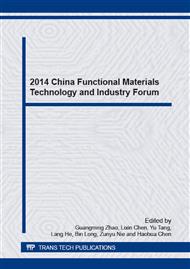p.471
p.477
p.485
p.493
p.500
p.503
p.507
p.514
p.520
Micro Patterning, Tension Force and the Growth of Osteoblasts
Abstract:
The microenvironment has been shown to regulate cellular functions including cell growth, differentiation, proliferation, migration, cancer development and metastasis. However, the underlying mechanism remains largely unclear. It has been reported that tension force is a key issue for osteogenesis of human mesenchymal stem cells (MSCs) and osteoblasts. In the present study, fibronectin film covered on glass substrate was made into square-shaped micro patterns. Osteoblasts cultured on this geometric substrate first located at the edge of the square. Next day the cells extended to the whole square. The results showed that geometric cues can control the growth of osteoblasts. Possible explanation is that the edge of the square provides higher tension force to the cell. These findings demonstrate that tension force from geometric shape is a positive signal for osteogenesis of osteoblasts and bone remodeling.
Info:
Periodical:
Pages:
500-502
Citation:
Online since:
December 2014
Authors:
Keywords:
Price:
Сopyright:
© 2015 Trans Tech Publications Ltd. All Rights Reserved
Share:
Citation:


